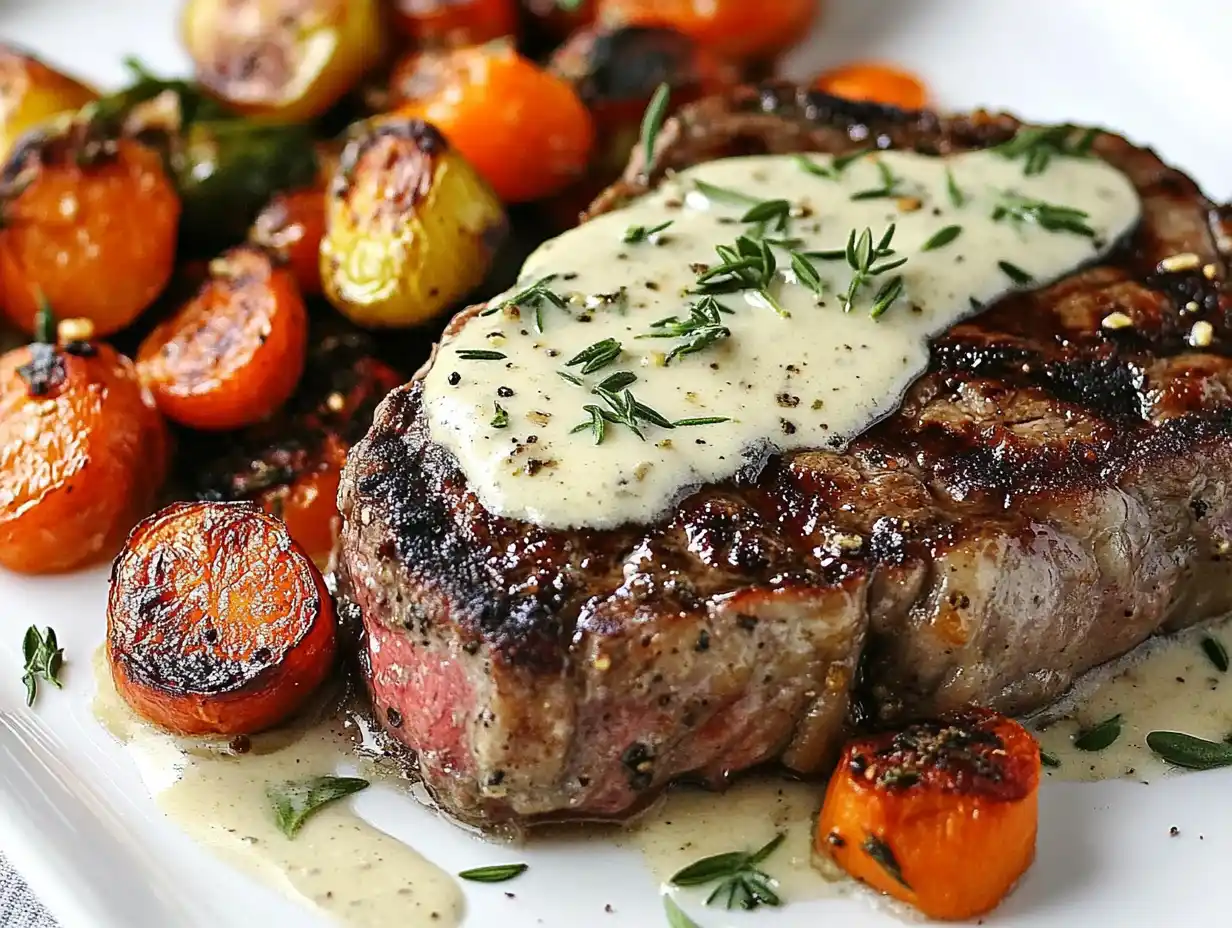There’s nothing quite like a juicy steak with creamy garlic sauce to satisfy a craving for something indulgent, flavorful, and comforting. Whether you’re hosting a dinner party, planning a romantic meal, or just treating yourself to a gourmet-style experience at home, this dish delivers in every bite. The combination of a well-cooked, tender steak and the smooth richness of garlic-infused cream sauce is a match made in culinary heaven.
This popular pairing has made its way from restaurant menus into home kitchens thanks to its simplicity and elegant taste. With just a handful of fresh ingredients and a few technique tips, even beginner cooks can master this dish. What makes this recipe even more attractive is its versatility you can tweak it to match your dietary needs, flavor preferences, or even turn it into a low-carb delight.
In this in-depth guide, we’ll walk you through everything you need to know to make the perfect juicy steak with creamy garlic sauce from choosing the right cut to nailing that creamy sauce, plating with style, and storing leftovers like a pro. You’ll also learn health tips, wine pairings, and some tricks that chefs use to elevate this meal from good to unforgettable.
In This Recipe
Choosing the Right Cut of Steak
Best Cuts for Juicy Texture
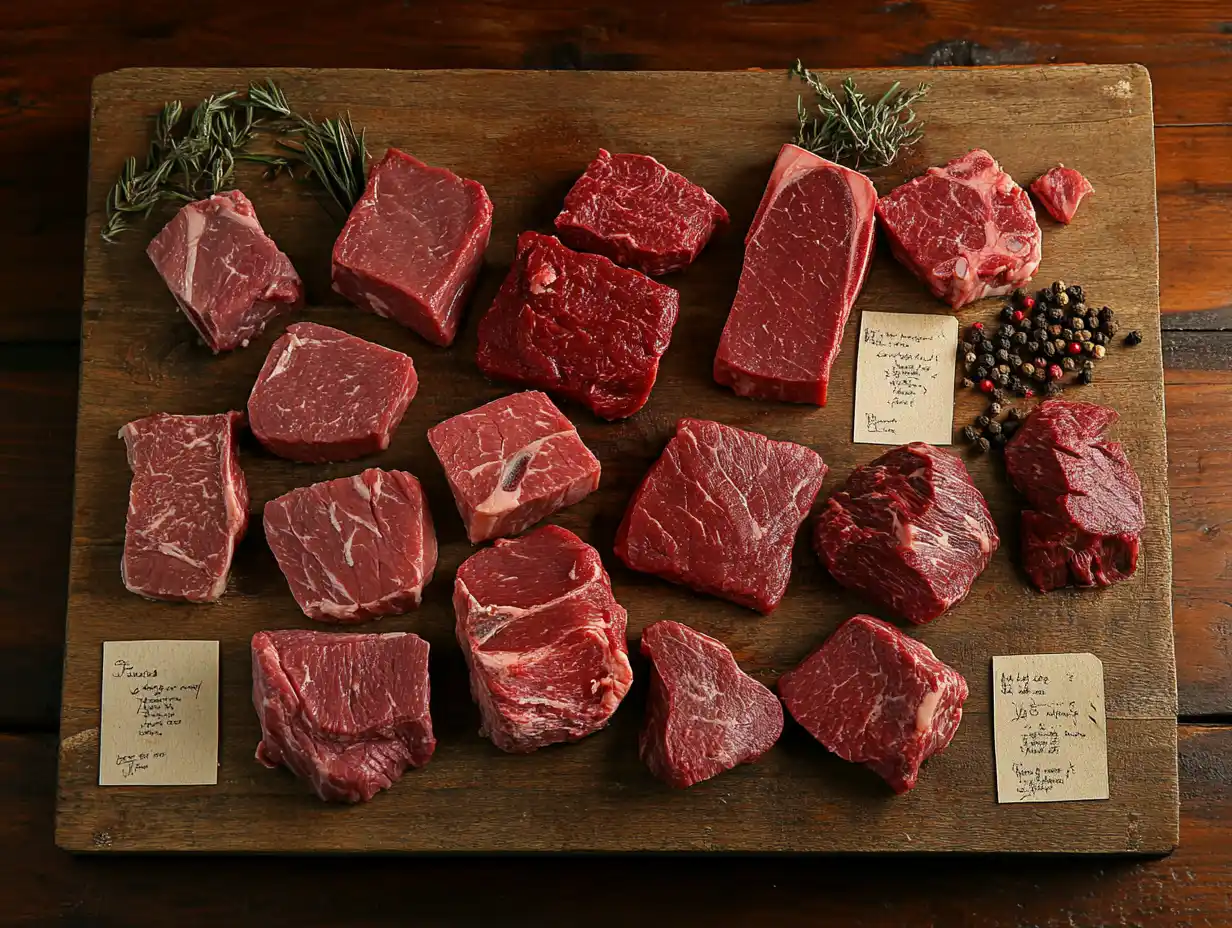
When preparing a juicy steak with creamy garlic sauce, choosing the right cut of beef is the first and most important step. Not all steaks are created equal some are tender and fatty, while others are lean and require different cooking methods to remain flavorful.
Here are some of the best steak cuts for juiciness:
- Ribeye: Often considered the king of steaks, the ribeye is well-marbled with fat, which melts during cooking and creates a juicy, flavorful result. It’s perfect for pan-searing and pairs beautifully with a rich, creamy sauce.
- Sirloin: Leaner than ribeye but still tender, sirloin has a robust beef flavor and holds up well to bold sauces like garlic cream. It’s also more affordable and easier to find.
- Filet Mignon: This cut is the most tender, though not as flavorful as ribeye due to its lower fat content. It’s a luxurious option when paired with a bold, creamy sauce that enhances its subtle texture.
- New York Strip: Known for its balance of tenderness and flavor, the strip steak is great for achieving that steakhouse-quality result at home.
How Fat Content Affects Flavor and Tenderness
Fat isn’t just about juiciness it’s about flavor. The marbling (thin streaks of fat within the meat) is what keeps a steak moist and tender while delivering a deep, satisfying taste.
Fat content also determines:
- Cooking time: More fat means slower cooking for even rendering.
- Texture: Fat softens muscle fibers, resulting in a melt-in-your-mouth bite.
- Flavor absorption: Fattier cuts absorb marinades and seasoning more effectively, which helps them hold up to the richness of a creamy sauce.
Grass-Fed vs. Grain-Fed Beef – Taste and Nutrition
The source of your steak matters, too. Here’s how grass-fed and grain-fed beef compare:
| Type | Taste | Nutritional Profile |
|---|---|---|
| Grass-Fed | Earthier, leaner | Higher in Omega-3s, lower in fat |
| Grain-Fed | Richer, more buttery | Higher in marbling and calories |
Both options can work well with garlic cream sauce, but grass-fed beef may require slightly less cooking time due to its lower fat content.
Ingredients Breakdown
Heading 3: Must-Have Ingredients for the Garlic Cream Sauce
The sauce is what elevates a simple steak to an unforgettable meal. The creamy garlic sauce https://grandmarecipesflash.com/juicy-steak-with-creamy-garlic-sauce/ should be smooth, rich, and packed with flavor. Here’s what you’ll need:
- Fresh garlic cloves – Minced or finely grated for a potent aroma.
- Heavy cream or double cream – Provides the base of the sauce with luscious texture.
- Butter – For richness and to sauté the garlic.
- Parmesan cheese (optional) – Adds a nutty, umami depth.
- Salt and pepper – For seasoning.
- Chicken or beef broth – Helps balance the cream and prevent the sauce from becoming too thick.
- White wine (optional) – For acidity and depth.
- Herbs (thyme, rosemary, parsley) – For a fresh finish.
Steak Seasoning Basics: Salt, Pepper, and More
The key to a delicious steak lies in simple seasoning. Don’t overcomplicate it:
- Kosher salt or sea salt – Coarse salt helps create a beautiful crust.
- Freshly ground black pepper – Adds a spicy kick and works perfectly with garlic flavors.
- Garlic powder or onion powder (optional) – For an extra boost of savory goodness.
- Paprika or chili flakes (optional) – To add subtle heat and color.
For best results, season both sides of the steak generously and allow it to rest for 20–30 minutes at room temperature before cooking. This not only enhances the flavor but also allows the seasoning to penetrate deeper into the meat.
Optional Add-ins: Mushrooms, Herbs, Cheese
Want to elevate your sauce even further? These additions can help:
- Mushrooms: Sautéed mushrooms bring an earthy flavor and meaty texture that complements both the steak and the sauce.
- Herbs: Fresh parsley, thyme, or rosemary can brighten the richness of the sauce.
- Blue cheese or Gorgonzola: For those who love bold flavors, a small amount of blue cheese melted into the sauce adds a luxurious twist.
Whether you go classic or creative, these ingredients offer versatility and depth, making your steak with creamy garlic sauce truly unforgettable.
Preparation Techniques for Juicy Steak
Marinating vs. Dry Rubs
When preparing steak, flavor infusion is key. There are two common methods to enhance taste before cooking: marinating and using a dry rub.
- Marinating involves soaking the steak in a liquid mixture typically made with oil, acid (like vinegar or citrus), herbs, and spices for several hours. This helps tenderize the meat and infuse it with flavor. However, it’s best suited for leaner cuts like flank or sirloin.
- Dry rubs involve coating the meat with a blend of spices and letting it sit uncovered or wrapped in the fridge. A classic rub for creamy garlic steak might include kosher salt, black pepper, garlic powder, paprika, and rosemary. Dry rubs are ideal for fattier cuts like ribeye, as they help create a flavorful crust during searing.
How to Bring Steak to Room Temperature Before Cooking
This simple step is often overlooked but makes a huge difference. Let your steak sit out at room temperature for 20–30 minutes before cooking. Why?
- It promotes even cooking, so you don’t end up with an overdone exterior and a cold center.
- It helps the steak sear more effectively, giving you that desirable crust without drying the inside.
Place the steak on a plate and loosely cover it with foil if you’re worried about air exposure or dust.
Pan-Searing vs. Grilling vs. Sous Vide
Different cooking methods yield different textures and flavor profiles. Here’s a breakdown of each:
| Method | Benefits | Best For |
|---|---|---|
| Pan-searing | Quick, easy, great crust | All cuts, especially ribeye |
| Grilling | Smoky flavor, great for outdoors | Sirloin, strip, T-bone |
| Sous vide + sear | Perfect internal temp, ultra-tender | Filet mignon, thick cuts |
Pan-searing is ideal when pairing with creamy garlic sauce. It allows you to deglaze the pan and use the steak drippings as a base for the sauce boosting flavor naturally.
Resting Time and Why It’s Crucial
Once your steak is cooked, resist the urge to cut into it right away. Letting it rest for at least 5–10 minutes ensures:
- The juices redistribute evenly throughout the meat
- You avoid a dry, flavorless center
- The steak remains tender and succulent
Cover it loosely with foil while resting to retain warmth without steaming the crust.
Cooking the Creamy Garlic Sauce
Sautéing Garlic to Perfection
Garlic is the heart of this sauce, so treat it right. Here’s how:
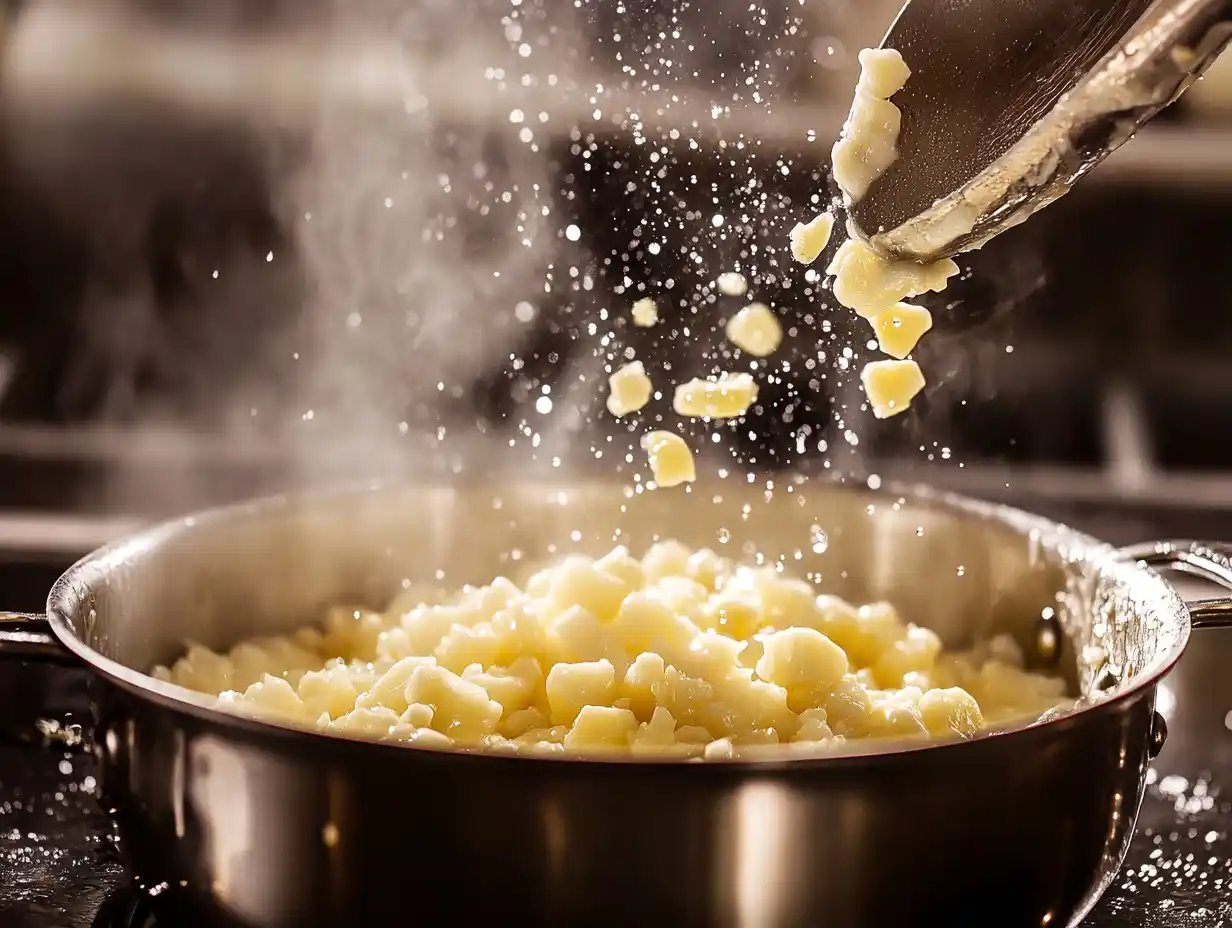
- Use fresh cloves, not pre-minced garlic. The flavor difference is huge.
- Sauté over medium-low heat in butter or olive oil. Don’t rush—garlic burns quickly.
- Cook until golden and fragrant, usually around 1–2 minutes.
Tip: Add a pinch of salt while sautéing to release the garlic’s natural oils.
Creating the Roux or Cream Base
You have two main options for building the sauce base:
- Roux-based: Mix equal parts butter and flour, whisk for 1–2 minutes, then slowly add milk or broth. This results in a thicker, gravy-style sauce.
- Cream-based: Use heavy cream, butter, and cheese for a luxurious, velvety texture.
For a garlic cream sauce:
- Deglaze the pan with a splash of white wine or broth.
- Add the sautéed garlic, then pour in the heavy cream.
- Let it simmer gently for 5–7 minutes until slightly reduced.
- Finish with grated Parmesan, salt, pepper, and chopped herbs.
Balancing Flavors – Wine, Broth, Cheese, and Herbs
A good sauce is about balance. Here’s how each component helps:
- Wine: Adds acidity and depth; white wine like Chardonnay or Sauvignon Blanc works best.
- Broth: Lightens the sauce while enhancing umami flavor. Use low-sodium chicken or beef broth.
- Cheese: Parmesan or even Gruyère enrich the creaminess.
- Herbs: Thyme, parsley, or chives add freshness and aroma.
Adjust salt at the end—many ingredients like cheese and broth already carry sodium.
Plating and Serving Ideas
Classic Sides That Pair Perfectly
A juicy steak with creamy garlic sauce deserves side dishes that enhance its richness without overpowering it. These classic options strike the right balance between texture and flavor:
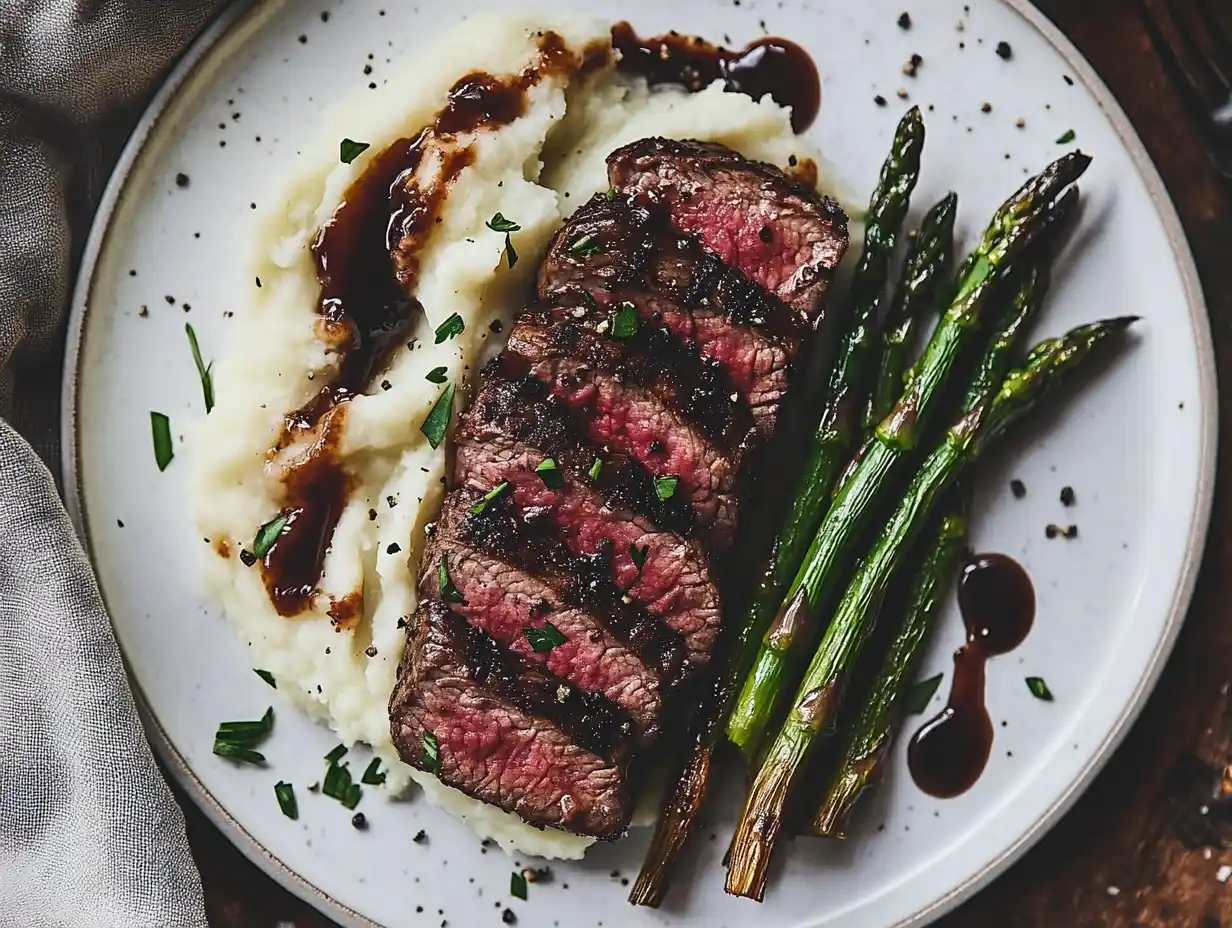
- Garlic Mashed Potatoes: Creamy and buttery, they soak up the sauce beautifully and offer a mild, comforting base.
- Roasted Asparagus or Green Beans: Adds crunch and freshness, balancing the richness of the dish.
- Crusty Bread or Dinner Rolls: Perfect for mopping up extra sauce.
- Grilled Corn on the Cob: Offers a sweet contrast that complements the garlic and cream.
- Creamed Spinach or Steamed Broccoli: Brings out the savory flavors in the sauce and adds fiber to the plate.
You can also serve the steak sliced over a bed of risotto, polenta, or wild rice for a more upscale presentation.
Garnishing Tips for Visual Appeal
We eat with our eyes first, and even a home-cooked steak can look restaurant-ready with the right garnishing. Here are some ideas:
- Fresh herbs like parsley or chives sprinkled over the sauce add color and a fresh aroma.
- Cracked black pepper or a dash of paprika on top of the sauce enhances visual contrast.
- Lemon zest or a drizzle of infused oil gives a gourmet touch and a hint of brightness.
- Microgreens or edible flowers (if available) make the plate pop for special occasions.
Plating tip: Slice the steak diagonally against the grain and fan it out slightly on the plate. Pour the sauce partially over the meat, leaving some of the seared crust visible.
Wine Pairings for Steak with Creamy Garlic Sauce
Pairing the right wine with your steak can enhance the flavors of both the food and the drink. Here’s what works best:
- Cabernet Sauvignon: A classic choice. Its bold tannins complement the richness of the steak and cream sauce.
- Merlot: Softer and fruitier, great for a creamier or cheese-heavy garlic sauce.
- Syrah/Shiraz: Offers spicy and smoky notes that pair beautifully with grilled steak.
- Chardonnay (oak-aged): If you’re using white wine in the sauce, this white balances creamy textures with a buttery finish.
Serve wine slightly chilled and let it breathe before pouring for maximum flavor impact.
Health and Nutrition Facts
Calorie Breakdown of a Standard Serving
While indulgent, this dish can be surprisingly balanced if portioned correctly. Here’s a rough estimate for a standard serving (8 oz steak + 1/4 cup sauce):
| Component | Calories | Protein | Fat | Carbs |
|---|---|---|---|---|
| Ribeye steak (8 oz) | ~650 | 50g | 50g | 0g |
| Garlic cream sauce (1/4 cup) | ~200 | 3g | 20g | 3g |
| Total | 850 | 53g | 70g | 3g |
This makes it a high-protein, low-carb meal ideal for keto or low-carb lifestyles when served without starchy sides.
How to Make It Keto, Low-Carb, or Gluten-Free
With a few swaps, this dish can fit multiple diets:
- Keto/Low-Carb: Use heavy cream and real butter in the sauce. Avoid flour-based roux and serve with veggies instead of potatoes or bread.
- Gluten-Free: Ensure your broth, cheese, and seasoning blends are gluten-free. Skip flour in the sauce or use gluten-free thickener like cornstarch or arrowroot.
- Low-Fat Version: Use lean cuts like filet mignon and light cream or milk alternatives (almond or cashew). Omit butter or use olive oil sparingly.
Substitutes for Dairy or Low-Fat Alternatives
If you’re lactose-intolerant or want to cut back on fat, try these substitutions:
- Unsweetened coconut cream or cashew cream: Delivers richness with less fat and no dairy.
- Lactose-free heavy cream: Widely available and tastes nearly identical to the real thing.
- Olive oil and garlic blend: For a lighter sauce, skip the cream and sauté garlic in olive oil, deglaze with broth, and finish with herbs.
Common Mistakes to Avoid
Even seasoned home cooks can make a misstep when preparing steak with a rich sauce. Here are some of the most frequent pitfalls and how to avoid them.
Overcooking the Steak
The number one mistake is overcooking the steak, which leads to a dry, tough texture. Here’s how to avoid it:
- Use a meat thermometer: Aim for 130°F (54°C) for medium-rare, 140°F (60°C) for medium.
- Remove the steak from heat a few degrees early: It continues to cook while resting.
- Don’t press down on the steak with a spatula while cooking it forces out the juices.
Remember: steak will firm up and dry out quickly if you leave it on the heat too long.
Burning the Garlic
Burnt garlic tastes bitter and can ruin your sauce. Keep these tips in mind:
- Always cook garlic on medium or low heat, never high.
- Stir continuously in the pan with butter or oil.
- Add garlic after butter melts, not before, to avoid instant scorching.
Tip: If garlic starts turning brown too quickly, remove the pan from heat and stir it will keep cooking off the residual heat.
Sauce Separating or Curdling
A broken sauce is disappointing and difficult to recover. Here’s how to keep your creamy garlic sauce smooth and luscious:
- Don’t let cream boil: High heat causes the fat and liquid to split.
- Add cheese slowly and stir constantly for even melting.
- Use room temperature dairy: Cold ingredients added to a hot pan are more likely to curdle.
- Whisk continuously once the sauce begins to simmer gently.
Fix tip: If your sauce begins to separate, try whisking in a splash of warm broth or wine to bring it back together.
Storage and Reheating Tips
Best Way to Store Leftovers
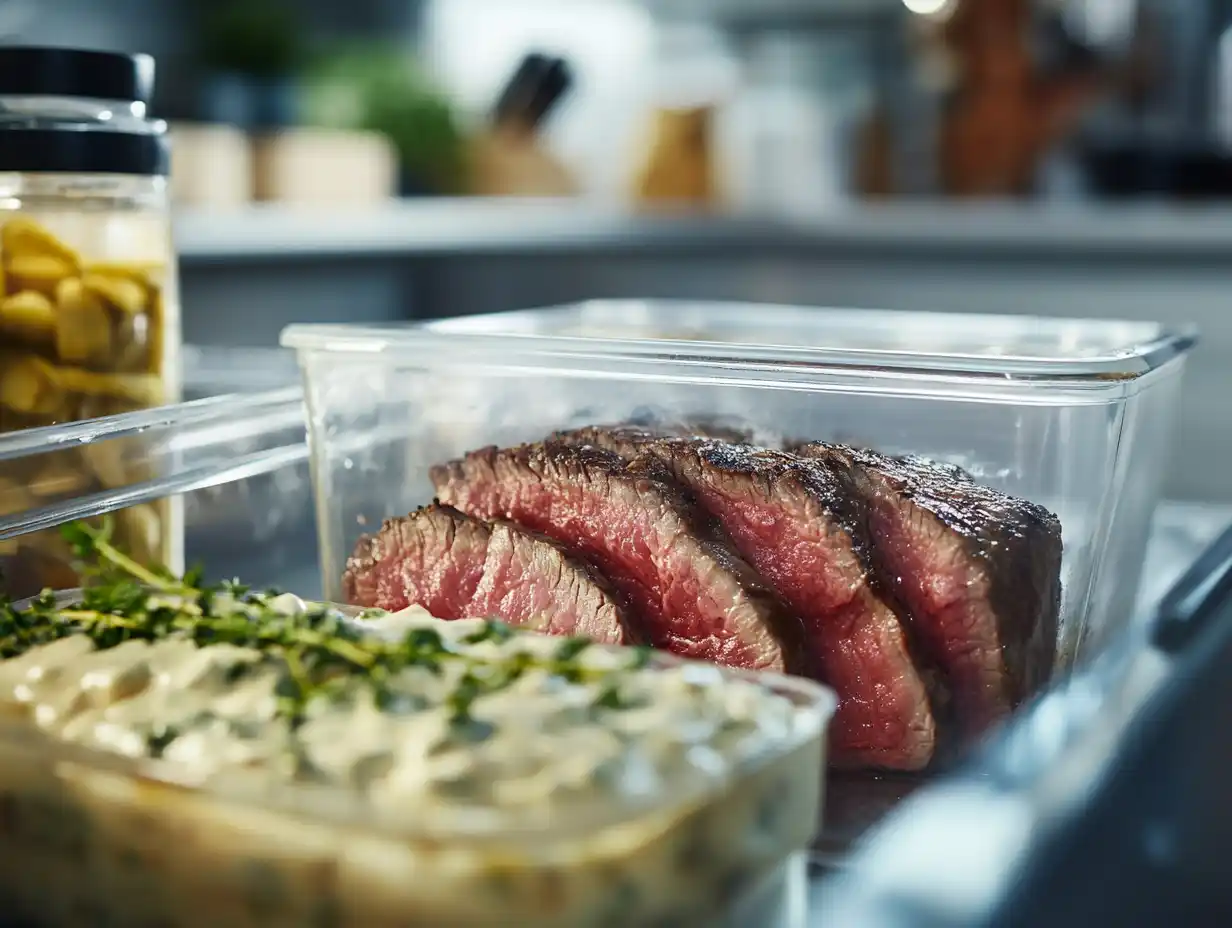
Proper storage helps preserve the flavor and texture of both the steak and the garlic sauce. Here’s how to store them separately:
- Steak: Wrap tightly in foil or place in an airtight container. Refrigerate within 2 hours of cooking. Consume within 3–4 days.
- Garlic Cream Sauce: Store in a glass container with a tight lid. Keeps well for up to 4 days in the fridge.
Avoid freezing cream sauce, as it often separates when thawed. However, the steak can be frozen for up to 2 months just slice it first for easier reheating.
Reheating Steak and Sauce Without Drying
Warming up leftovers without ruining the texture is a skill worth mastering. Here’s how:
Reheating Steak:
- Oven Method: Wrap steak in foil and place in a 250°F (120°C) oven for 10–15 minutes until heated through. This keeps it tender.
- Skillet Method: Sear it briefly in a hot pan with a little butter or oil to re-crisp the edges.
- Avoid microwaving: It tends to toughen the meat quickly.
Reheating Sauce:
- Use a low-heat saucepan or double boiler.
- Stir constantly and add a splash of milk or broth to loosen the texture.
- Never let it boil keep it just under a simmer.
If you need to reheat both together, place the steak in a shallow pan, cover with sauce, and warm gently on the stovetop or in the oven.
Frequently Asked Questions
Can I use milk instead of heavy cream for the garlic sauce?
Yes, but the sauce will be thinner and less rich. For better results, use whole milk and add a teaspoon of flour or cornstarch to help thicken it. Alternatively, use evaporated milk or half-and-half for a more balanced texture.
What herbs go best with creamy garlic steak?
Fresh herbs like thyme, rosemary, parsley, and chives pair exceptionally well. Thyme offers earthiness, rosemary gives a bold aroma, and parsley adds freshness that balances the richness of the sauce.
Can I make the garlic sauce ahead of time?
Yes. Prepare the sauce up to 3 days in advance and refrigerate in an airtight container. Reheat gently on the stovetop over low heat, stirring in a bit of broth or cream to loosen it. Do not microwave, as this may cause separation.
How do I know when the steak is done?
Use an instant-read meat thermometer:
- Rare: 120–125°F (49–52°C)
- Medium-rare: 130–135°F (54–57°C)
- Medium: 140–145°F (60–63°C)
- Medium-well: 150–155°F (65–68°C)
Remove the steak from heat 5°F before it reaches your desired doneness and let it rest.
What’s the best pan for searing steak?
A cast iron skillet is ideal. It retains heat well and creates a perfect crust. Make sure it’s properly seasoned and preheated before adding the steak.
Heading 3: Can I add mushrooms or onions to the sauce?
Absolutely. Sautéed mushrooms or caramelized onions add an earthy sweetness and umami depth. Add them after cooking the garlic and before pouring in the cream for best integration.
Conclusion
Cooking a juicy steak with creamy garlic sauce is a delicious journey that combines simple techniques with rich, indulgent flavors. Whether you’re using a ribeye for its buttery marbling or a lean filet mignon for tenderness, the real star is how the creamy garlic sauce enhances the beef bringing out its bold character while adding a silky, aromatic layer of flavor.
By understanding the right ingredients, cooking methods, and plating techniques, you can transform a home-cooked meal into a gourmet experience. You’ve also learned how to troubleshoot common issues, tailor the recipe to your dietary needs, and extend its enjoyment with smart storage and reheating tips. https://royalesrecipes.com/do-i-need-to-flip-my-steak-in-the-air-fryer/
Now that you’re equipped with expert-level guidance, it’s time to fire up that pan and create the ultimate steak night at home. Serve it with confidence, and don’t forget the wine!

